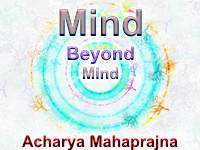
There are some specialists in Sadhana who engage themselves in their own practices and instruct others also in them. This of course is not possible for the average man. Being a novice, the average man will encounter a number of difficulties. His own capacity, strength, and special aptitude are the preconditions of a successful Sadhana. There are, however, some practices, which he can easily and safely adopt.
There are three aspects of Sadhana: Soul, Prana, and practical life. Self-realization is the highest stage of Sadhana. This is also the highest stage of the development of Cetana or consciousness. The second aspect is the practice of Prana. It is through the development of the potential of Prana, of the strength of mind and of energy that one can accomplish self-realization. The third aspect is practical life. If we are unable to bring about a change in our attitude in practical life, our Sadhana will become a mockery. The spiritual changes, which Sadhana brings about, must be followed by a change in the practitioner's personal and social life also. The two changes should continue together, because they are complementary to each other. Let us consider the following exercise:
In order to achieve a perfect spiritual life let the practitioners perform the exercise of eliminating the ego. The ego and the feeling of 'this is mine' are the greatest obstacles in the spiritual practice of Sadhana and in the unfolding of consciousness. This practice will have to be done for a long period, say six months or so.
There are two steps in Prana Sadhana: prolonged breathing and moderated breathing. The more prolonged the breathing, the less defiled will be the mind. Anger and other emotional excitements will begin to disappear gradually. The shorter the breathing, the more frequent will be the deformations of the mind. Prolonged breathing cleanses the mind by removing those elements, which defile it. The lung cleans the blood, which is pumped into the arteries. Our blood contains particles of past tendencies and subconscious effects of past experiences. The more the wiping out of these elements from the mind, the more composed will it be. Blood polluted by predilections will produce peevishness and anger. Prolonged breathing releases carbon contained in the blood. Short breathing does not take in enough oxygen, nor does it release enough carbon from the blood. It is, therefore, ineffective in changing the humours. The practice of prolonged breathing is, therefore, a necessary step.
The next thing is moderated or regulated breathing. Moderation of time periods in breathing is as necessary as marking time beats (Tala) in music. The time length of inhaling and exhaling and the holding of breathe in the interval between the two should be the same. This needs some exercise, may be a long one. Regulation of steps is necessary in order that one may walk smoothly. This applies to breathing also. It produces a rhythm in breathing, which makes concentration easy and natural. An undisturbed and composed mind alone can enter into a state of concentration, which is the outcome of regulated breathing.
The third aspect is practical life. In order to live a smooth and harmonious life, it is necessary to practise compassion. The practice of compassion is a long practice and it should be done very carefully with a self-watchful mind. One should practise compassion towards his own children, relatives, members of his family and so on. He has to avoid being cruel at every step. Compassion cures us many of the diseases of the mind. Cruelty is the product of injustice. According to the Jain discipline, you cannot achieve the state of equanimity (Samyak Drsti) without being compassionate. There can be no equanimity without compassion. Its absence produces false vision (Mithya Drsti).
Spiritual exertion thus implies the elimination of the ego, the practice of long breathing and compassion.
 Acharya Mahaprajna
Acharya Mahaprajna

